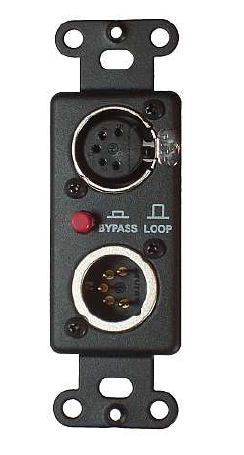It's always been a big no-no to split a DMX signal with a passive splitter, but every fixture I repair always has direct continuity between the in and out ports. I understand reflections are an issue, is this possible because the split happens so close to the fixture electronics?
Also, this is purely anecdotal, I have never terminated a DMX network with a 110Ohm resistor in my life. I do have one soldered to an XLR connector in my toolbox, just in case, but never used it. My fixtures are pretty cheap and low-end (see my FreeStyler post to see exactly what I use) and none of them seem to have an internal terminator. I use exclusively 3-pin microphone cable too.
This stuff isn't in great shape, and I have run up to 200' total cable before the first fixture, 10-50' between fixtures for this, longer if I used house audio multicore for a DMX universe at a venue.
Why haven't I ever had problems?
Also, this is purely anecdotal, I have never terminated a DMX network with a 110Ohm resistor in my life. I do have one soldered to an XLR connector in my toolbox, just in case, but never used it. My fixtures are pretty cheap and low-end (see my FreeStyler post to see exactly what I use) and none of them seem to have an internal terminator. I use exclusively 3-pin microphone cable too.
This stuff isn't in great shape, and I have run up to 200' total cable before the first fixture, 10-50' between fixtures for this, longer if I used house audio multicore for a DMX universe at a venue.
Why haven't I ever had problems?



